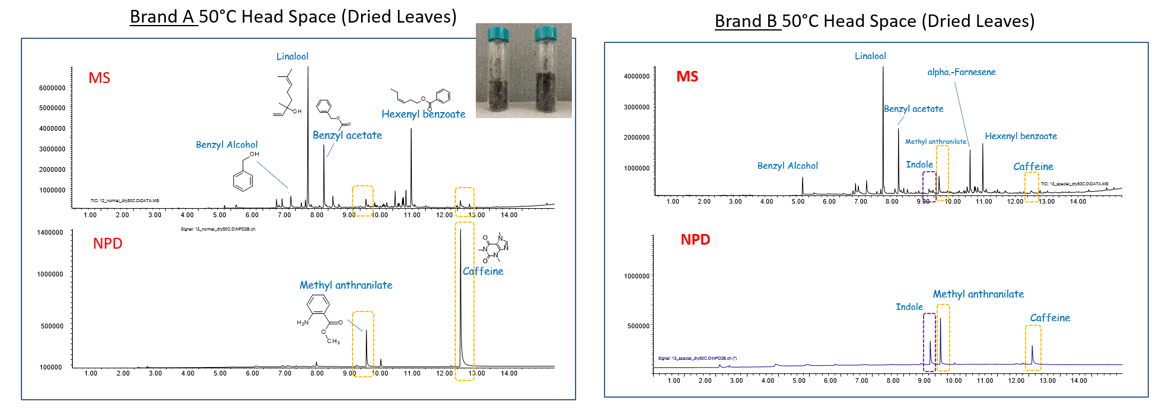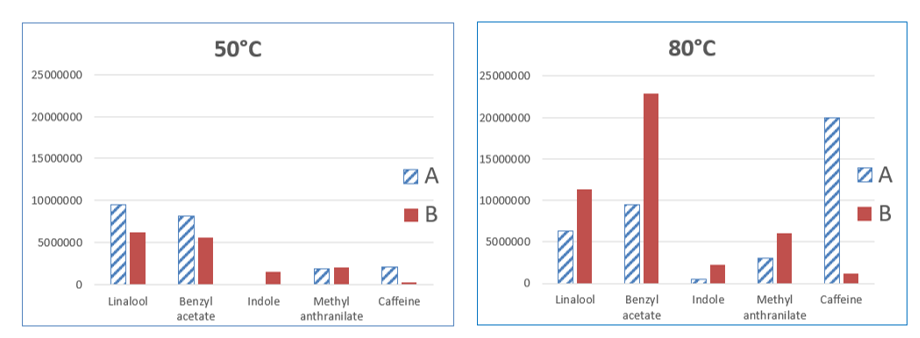Subtle differences in natural products are common, but they rarely influence the overall performance of the final product; however, there are instances where products which are nominally expected to be similar, are vastly different. This is especially true in the food and beverage industries where it is a common practice to add various supplements to enhance taste, extend shelf life or affect many other aspects of the product.
Frontier Lab has developed a simple Solid Phase Extraction (SPE) technique to concentrate organic compounds from gaseous and liquid matrices. A chemically bonded PDMS layer on a titanium tube extracts the organic compounds. The tube is placed in deactivated stainless-steel cup, desorbed in the pyrolyzer, and vapors Cryo-focused in a narrow band at the head of an analytical column. A chromatographic run commences utilizing both MS and the selectivity of the NPD simplifying detection for compounds of interest.
Experimental: In this study, two jasmine tea samples are used to demonstrate how the Magic Chemisorber can eliminate the need for conventional solvent-based extraction protocols. Analytical headspace samples were collected in two different environments (dry leaves and wet leaves) at two different temperatures: 50 and 80 ⁰C.


The GC/MS and GC/NPD chromatograms for both brands are shown below.



Comparing the Volatiles Emanating from each Brand at 50 and 80 ⁰C:
- Brand A has much more caffeine than brand B.
- When the tea leaves are wet and held at 80 °C, higher levels of aroma compounds (Linalool, Benzyl acetate) emanate from brand B.

Conclusion: Solid phase extraction (SPE) is a simple and easy technique for isolating and concentrating organic compounds in gas and aqueous phases. The adsorbed organics are thermally desorbed, separated and detected using gas chromatography.
GC/MS is a good way to obtain detailed information on the organics present in the sample; however, sometimes the GC/MS chromatogram is complex which makes it difficult to identify trace level constituents. In such cases, using a selective GC detector (e.g., NPD, FPD, and ECD) will simplify the chromatographic trace making it easier to detect compounds of interest in the sample.
This study demonstrates the use of the Magic Chemisorber (MC) to collect the organics in two different Jasmine teas. The MC-PY-GC-MS-NPD system simultaneously generates MS and NPD data. These two data sets simplify the identification of flavor and fragrance compounds in these two tea products. The Frontier Multi-Shot Pyrolyzer 3030D was used for this experiment.
To learn more about this technique and request additional technical application notes, simply connect with us or visit us at www.frontier-lab.com.
